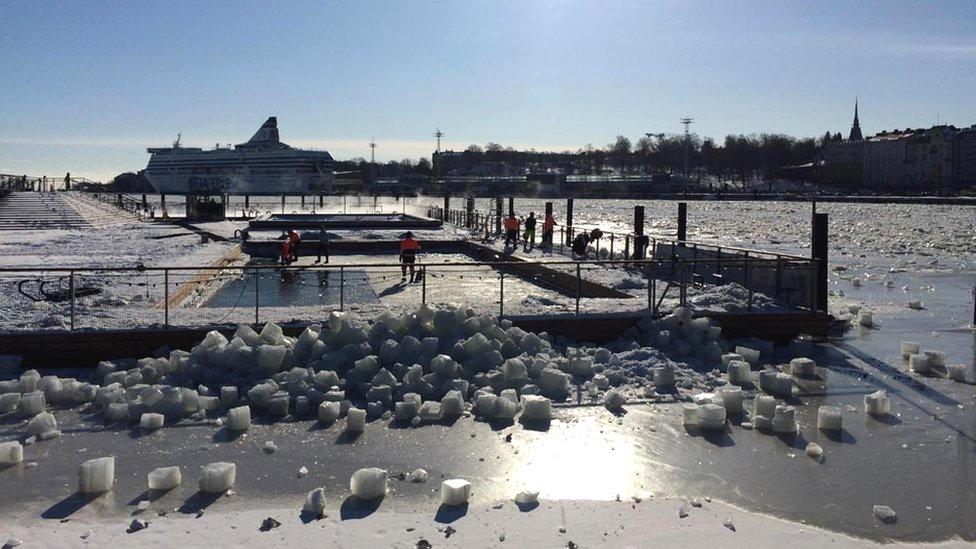How do Nordic countries cope with the snow?
- Published

It is a question we may have all asked. How do Nordic countries cope with the bad weather?
While we might regard the so-called Beast from the East as a particularly cold snap, the residents of Helsinki in Finland would consider it relatively mild.
Temperatures there are hitting -20C with the wind chill taking it down to about -28C.
But schools have remained open, the roads are clear, and life goes on.
'Cope pretty well'
Journalist and author Minna Dufton told 91╚╚▒Č Scotland: "We don't tend to go into any mad panics as such when we have snow coming, or we know it's going to be really cold, but we do struggle. I can't say it's easy here.
"It is very well equipped for this. I can't remember seeing schools closed. Shops? No, they don't close. The roads open. Public transport, the works. People still get to work.
"I guess we cope pretty well, compared to you, but we've got a lot of experience at this end of all of that."
Footpaths are cordoned off while roofs are cleared of snow in Finland
She is unaware of a colour-coded warning system for snow but one does exist for low temperatures.
It varies depending on which part of Finland you live in.
For residents in the north, a red alert is sparked at -45C. In Helsinki it's -35C.
Coldest ever
The coldest temperature in Scotland during the Beast from the East has been -10.3C in Kinloss.
The lowest ever temperature recorded was -27.2C in Braemar in 1982.
The new alert system in Scotland is not based on these types of thresholds but is a judgement comparing the severity of the weather against the scale of the potential impact.
Scotland - Newburgh is photographed on Thursday - has been gripped by snow this week
Getting through the winter with minimum disruption does not come for free and some residents in Finland have to pay a winter maintenance fee to keep the roads and footpaths clear.
A detached house might be charged about £70 per year and some residents are expected to clear and grit footpaths outside their properties.
Snow dumping sites are also set up around the city but residents have to pay a fee to get rid of it.
In 2017 the Helsinki city council set itself targets to clear and grit all main roads, pedestrian and cycle routes by 07:00, with parks and squares cleared by 08:00.
So how would they react to being told not to travel?
Helsinki's Deputy Mayor for Urban Environment Anni Sinnemaki said: "I would say it wouldn't go down (well) at all. People probably would think that the city is escaping its responsibilities of keeping the city functioning even in cold and snowy weather.
"We have a city owned facility with a public company that has 1,400 people and they work all the year round in different functions keeping the city clean.
"During the summer time they do other things like keeping the parks in good shape and some of them in the winter time are responsible for cleaning the streets from the snow and from the ice."
Gets people talking
According to the Finnish Meteorological Institute, some parts of the country have a seven-month long winter with snow cover at its thickest in Lapland around March.
In the capital, there is snow cover on an average of 115 to 130 days.
But one distinct similarity with Scotland is that people still talk a lot about the weather.
Ms Dufton added: "This week it's really got people talking and some newspaper columnists have been wondering why we still go on about the weather.
"But it's just something that gets people talking. It's something we live with for long periods of time.
"Now we've had two quite cold weeks here and it's half term holiday time. The weather has spoiled some people's holiday plans.
"You can't go downhill skiing when it's very, very cold and that kind of thing does get people talking."